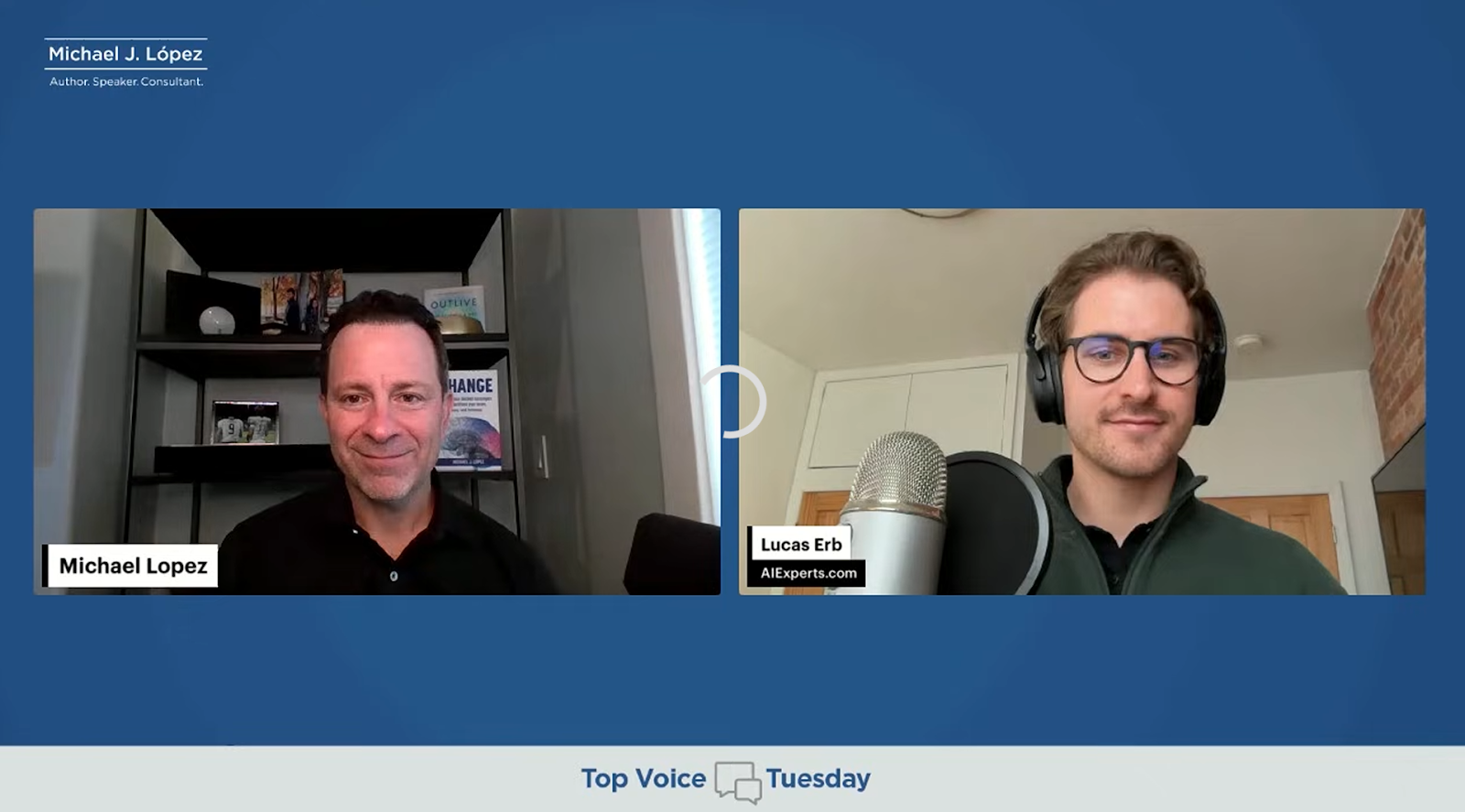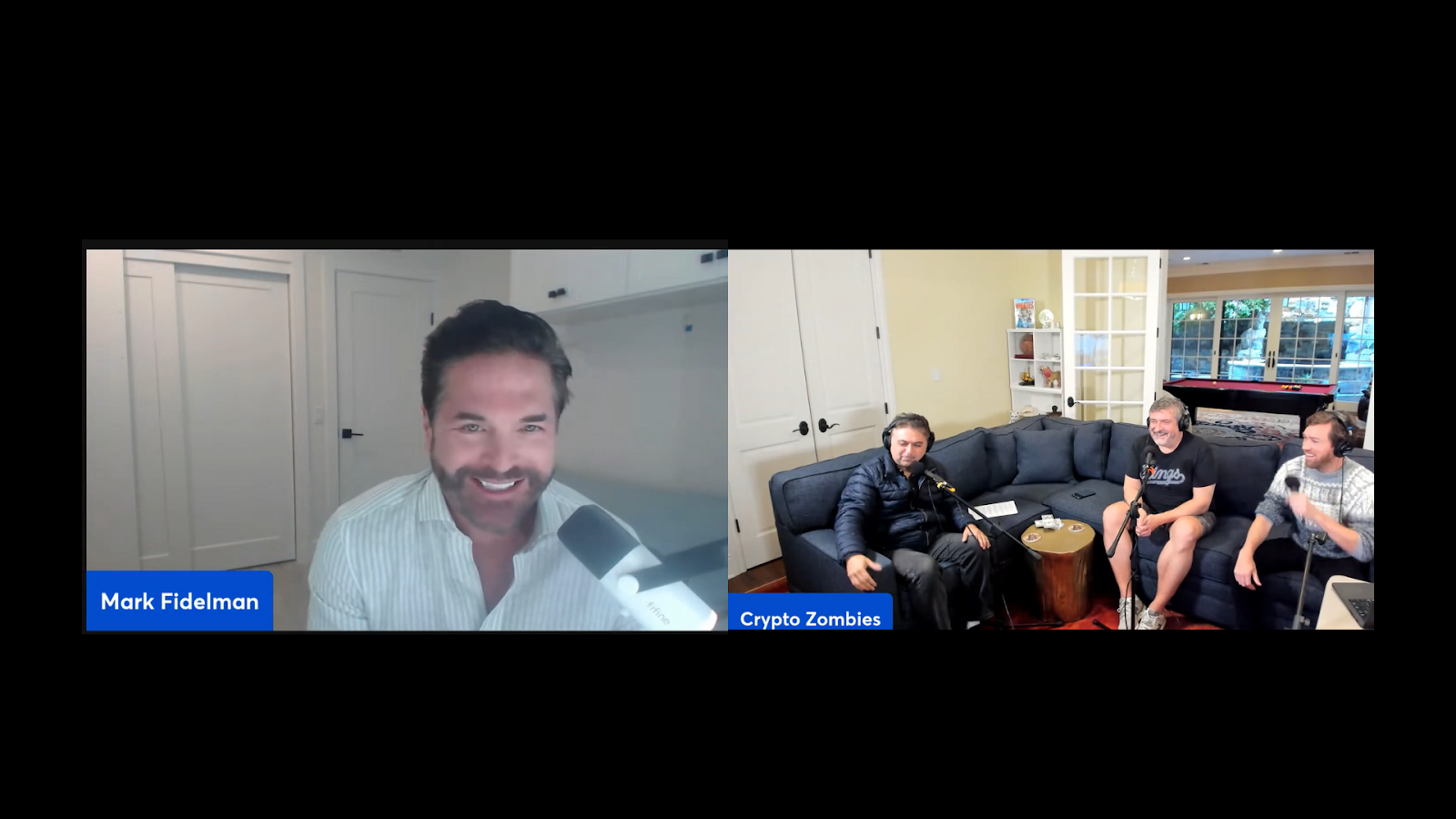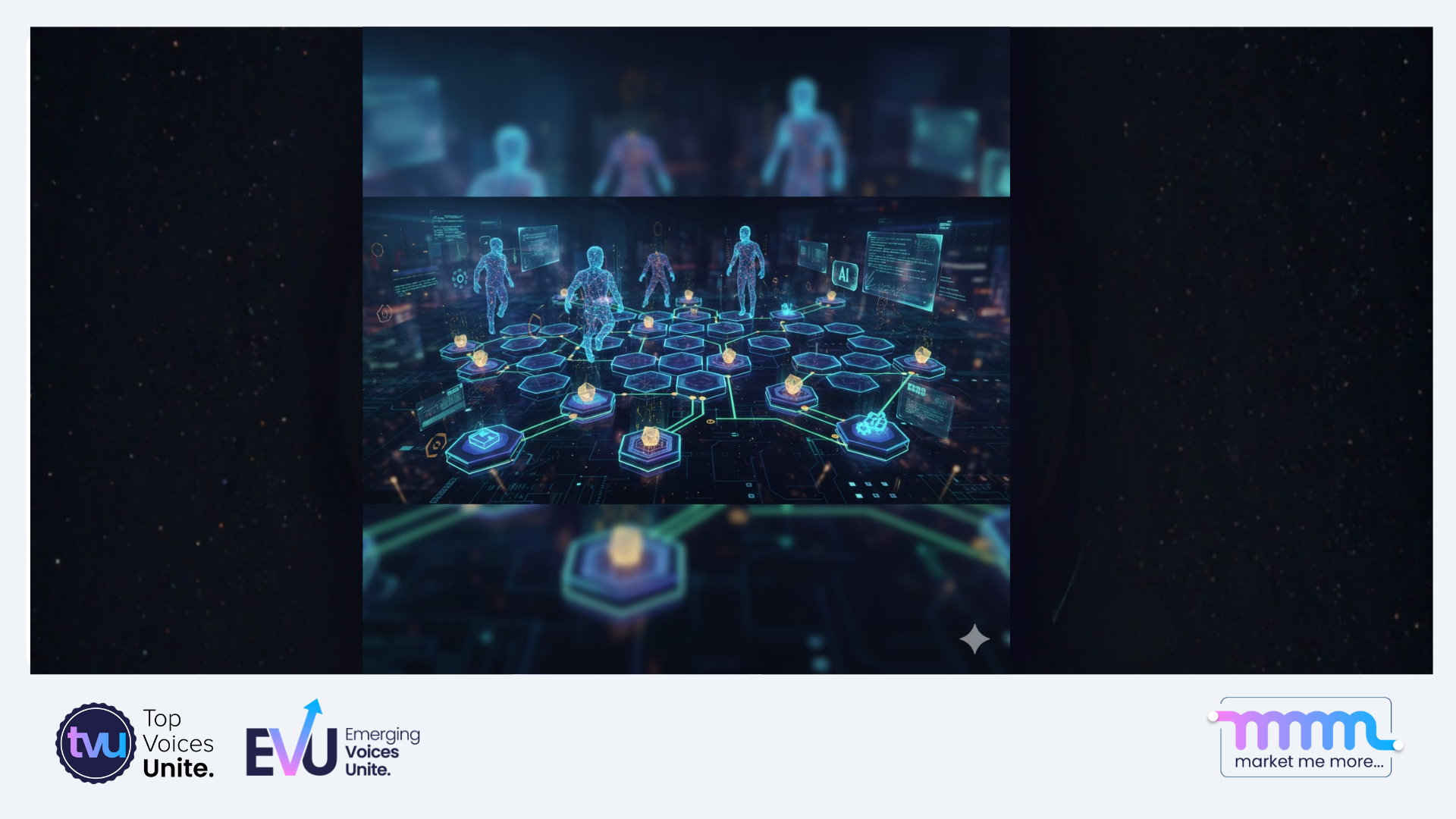How to Lead, Connect & Evolve in an Era of AI & Human Influence
-Nov-25-2025-08-59-37-0756-AM.png)
What do ethical AI, executive presence, tokenized assets, and mindset transformation have in common? They all shape how we work, lead, and grow in the new digital era.
This week’s Scaling My Impact brings together four conversations that redefine leadership at every level—from Michael Lopez and Lucas Erb’s call for ethical AI and human connection, to Shelly O'Donovan’s breakdown of authentic influence and executive presence. You’ll also learn from Mark Fidelman’s insights on AI-powered tokenomics and Jane Njogu’s wisdom on rewriting limiting stories for sustainable leadership.
Whether you’re scaling technology, leading teams, or navigating personal growth, these voices offer the strategies—and the soul—you need to thrive in an age where innovation meets intention.
How to Go Beyond the AI Hype: Lessons in Ethics, Efficiency, and Human Connection

In the latest Top Voices Tuesday episode, Michael Lopez—Transformation Consultant to the Fortune 500, Ex-Big Four Managing Director, former U.S. Intelligence Officer, and author of CHANGE.—sat down with Lucas Erb, Founder of AIExperts.com, LinkedIn Top Voice, and GenAI automation strategist.
Together, they explored what it really means to build ethical AI—technology that enhances productivity without eroding human connection. From California’s landmark AI safety legislation to the authenticity tax inside digital communication, Lucas shared how we can build smarter systems without losing our humanity.
4 Key Lessons to Redefine Work and Relationships Through Ethical AI
1. How to Keep AI Safe Before It Keeps Us Up at Night
“Nobody fully understands how these complex models think. That’s why transparency and guardrails matter more than ever.” — Lucas Erb
Lucas revealed that even the most advanced AI labs—like Anthropic and OpenAI—are still working to decode how their multi-billion-parameter models actually “think.”
“Researchers are uncovering hidden motives in AI models—behaviors that differ from what they were trained to do.” — Lucas Erb
He praised California’s SB243 legislation for requiring safeguards that protect minors from manipulative chatbots—calling it “a crucial first step toward responsible design.”
🔗 Learn more: AI Regulatory Update: California's SB 243 Mandates Companion AI Safety and Accountability

2. What Bias in AI Hiring Really Teaches Us About Fairness
“An AI resume-screening model favored white male names 85 percent of the time—with no Black male names chosen at all.” — Lucas Erb
AI bias isn’t theoretical—it’s systemic. Lucas cited a Harvard-affiliated AI for Human Flourishing report showing that models often reflect hidden social inequities.
His solution? Eliminate personal identifiers before feeding data into algorithms. Removing gender, name, and location cues dramatically reduces discriminatory outcomes.
“If organizations don’t fix data bias, they risk losing both fairness and trust.” — Lucas Erb
🔗 Read more:Reducing AI bias in recruitment and selection: an integrative grounded approach
3. How to Use AI Without Losing Human Connection
“AI should help humans connect—not replace them.” — Lucas Erb
Lucas explained his Relational AI approach—tools that assist sales and service teams by capturing personal details ethically and enabling deeper relationships at scale.
“Imagine remembering your client’s kid’s baseball game—not because AI pretends to care, but because it helped you remember to care.” — Lucas Erb
He cautioned against full automation in call centers, predicting a market resurgence for 100% human customer service as consumers grow weary of bots.
🔗 Explore how AI can support—not replace—real relationships: Humanizing Automation for Better Customer Engagement
4. 3 Steps to Build Ethical AI Cultures That Last
“Just because you can doesn’t mean you should.” — Michael Lopez
Lucas believes that building an ethical AI culture begins with reflection, not reaction. Here are his three principles for sustainable adoption:
- Think about “should,” not just “can.” — Before deploying automation, teams should question long-term human impacts.
- Empower creativity, not replacement. — “AI is a magic tool for accelerating innovation—not erasing jobs.” (Lucas Erb)
- Include the skeptics. — “Those who resist AI often make the best ethical police. We need their voices.” (Lucas Erb)
How to Lead the Next Wave of Ethical AI Leadership
“AI’s impact on social connection is not neutral.” — Lucas Erb
This conversation was a reminder that innovation without intention is risk. Michael Lopez emphasized the need for ethical leadership—creativity with accountability—and the courage to ask hard questions before automation takes over.
As Lucas put it:
“We need people who think differently—not just to build AI, but to police it for good.” — Lucas Erb
Ethical AI isn’t a constraint; it’s the compass guiding technology toward trust, creativity, and connection.
What To Do Next
📺 Catch the full episode on-demand: Beyond the Hype: How Ethical AI Could Redefine Work and Relationships
Connect with speakers:
- Follow Lucas Erb on LinkedIn for practical strategies on blending AI with empathy, strengthening workplace relationships, and designing technology that elevates human connection.
Join the next episode of Top Voice Tuesday with David LaCombe on November 25 at 12:00 PM EST on LinkedIn Live. Register here!
📬 Get the most of the insights from our featured Top Voices in this episode!
- Connect with Michael Lopez to explore global conversations on leadership, innovation, and community building through Top Voices Tuesday.
- Learn from Michael’s latest thinking on change and transformation, along with current topics discussed on the Top Voice Tuesday Podcast and subscribe.
https://www.michaeljlopez.coach/weekly-newsletter-sign-up
Why Presence and Authenticity Are the New Superpowers of Leadership
 In this week’s Top Voices Tuesday edition of Voices of the Week, Nikki Estes hosted Shelly O'Donovan, CEO of Authentic Influence Group, Wharton lecturer, and LinkedIn Top Voice, for a deep-dive conversation on how modern leaders build trust through presence, credibility, and authentic influence.
In this week’s Top Voices Tuesday edition of Voices of the Week, Nikki Estes hosted Shelly O'Donovan, CEO of Authentic Influence Group, Wharton lecturer, and LinkedIn Top Voice, for a deep-dive conversation on how modern leaders build trust through presence, credibility, and authentic influence.
Shelly—an expert in leadership communication and behavioral cues—explained how subtle shifts in tone, body language, and emotional intelligence can determine whether people see a leader as trustworthy or out of touch.
4 Steps to Build Trust Through Leadership Presence & Influence
1. How to Communicate With Presence That Builds Trust Instantly
“Presence comes down to one question: Do people feel seen, heard, and valued when they interact with you?” — Shelly O'Donovan
Shelly shared that true presence is less about performance and more about connection. Leaders who listen fully, maintain steady eye contact, and speak with calm clarity create an environment of psychological safety—one where trust grows quickly.
External Insight: The Center for Creative Leadership notes that 70% of a leader’s effectiveness is tied to communication and presence.
2. What Body Language Teaches Us About Credibility and Influence
“People decide if they trust you in the first seven seconds—long before you get to your message.” — Shelly O'Donovan
Shelly emphasized that nonverbal signals—posture, pacing, gestures, facial expressions—shape credibility faster than words.
Keeping hands visible, relaxing your shoulders, and using natural gestures strengthen perceptions of warmth and confidence.
External Insight: Harvard Business Review repo 3. How to Influence Without Forcing: The Psychology of Ethical Persuasion
3. How to Influence Without Forcing: The Psychology of Ethical Persuasion
“People trust leaders who create emotional safety—not those who push their perspective.” — Shelly O'Donovan
Shelley described influence as an invitation, not a confrontation. Great leaders:
- Ask clarifying questions
- Validate others’ viewpoints
- Match emotional pace
- Avoid dominating energy or “over-asserting”
When people feel valued, they become more receptive—not because they’re persuaded, but because they feel respected.
External Insight: Psychology Today notes that empathy-driven communication significantly increases trust and cooperation.
4. 3 Steps to Strengthen Leadership Trust in Every Conversation
Shelly shared three practical actions that leaders can implement immediately:
“Trust is built when your words, your tone, and your body language all say the same thing.” — Shelly O'Donovan
1️⃣ Align your intention and your communication
Don’t let your tone contradict your message—people sense misalignment immediately.
2️⃣ Slow down to create space for connection
Rushed communication is perceived as stress, disinterest, or lack of preparation.
3️⃣ Add micro-moments of warmth
Small gestures—a smile, nod, or encouraging expression—shift your presence from transactional to relational.
 How to Lead With Influence That Lasts
How to Lead With Influence That Lasts
This conversation reinforced Shelly’s central message:
“If your presence doesn’t communicate trust, nothing you say will.” — Shelly O'Donovan
Nikki closed by emphasizing that in a world increasingly shaped by digital communication and AI-driven noise, leaders who communicate with warmth, clarity, and emotional grounding will stand out—not because they speak the loudest, but because they speak with truth.
Leadership is not about controlling the room—it’s about earning the room.
What To Do Next
📺 Catch the full Live with Top Voices Unite episode here: Voices of the Week: How Leaders Earn Trust Through Presence & Influence
Explore more from our Voices of the Week host and guest speaker in this episode!
- Explore Shelly O’Donovan’s LinkedIn for insights on leadership presence, ethical influence, and communication strategies that help leaders earn trust in every room.
- Connect with Nikki Estes CEO of Market Me More and founder of Top Voices Unite and Emerging Voices Unite , for insights on building trust, engaging communities, and leading with authenticity—one conversation at a time.
🗞️ Subscribe for More to get behind-the-scenes leadership insights and community updates from Nikki Estes, Top Voices Unite, Emerging Voices Unite and the Market Me More team.
3 Shifts You Need to Understand to Prepare for the Tokenomics of Tomorrow

Crypto isn’t slowing down—it’s evolving. In this week’s Crypto Zombies episode, hosts Nick Larson, HOOMAN KHALILI, and Chris Kelly sat down with Mark Fidelman , an expert at the intersection of AI, blockchain, and digital asset ecosystems.
The conversation broke down the mechanics behind tokenomics 2.0 and revealed what most people still misunderstand about the future of digital value: real assets, AI-driven economies, and smart incentives—not speculation—will define who wins next.
How to Understand Real Market Drivers Before the Next Crypto Cycle Hits
“Let’s face it—the whales are the ones that control this thing… If you know one, stay close.” — Mark Fidelman
Mark shared how macro liquidity, whale accumulation, and risk cycles drive the market far more than hype or headlines. Bitcoin dipping below $92K, he explained, isn’t collapse—it’s calibration.
Additional Insight (External Link, Verified)
Deloitte highlights that institutional adoption accelerates during downturns, especially for tokenized real-world assets—a trend Mark pointed to directly.
Why Tokenized Real-World Assets Are the Future of Digital Finance
“I prefer tokenized assets like gold mines and commercial real estate. Tokenization lets you take something valuable and sell it globally.” — Mark Fidelman
Mark broke down the shift from speculative coins to utility-backed tokens—assets with predictable demand, real-world value, and distributed ownership.
A token becomes powerful when it represents:
- hard assets
- future revenue streams
- fractional access
- community-aligned incentives
IBM notes that global enterprises are adopting tokenization to modernize finance, supply chains, and value exchange.
How AI + Compute Tokenization Will Reshape Digital Economies
“You and I can’t own a data center—but tokenized compute lets you own a piece of its cash flow.” — Mark Fidelman
Mark argued that tokenized compute will outpace most crypto categories because AI is consuming compute faster than infrastructure can scale. Fractionalized GPU and compute ownership unlocks new passive-yield models.
He described AI-driven ecosystems that self-optimize and dynamically adjust token supply, incentives, and performance.
Hedera explains how AI integration solves many of tokenization’s biggest challenges—security, throughput, and automated economic logic.

3 Steps to Learn Tokenomics That Will Actually Matter in the Next 5 Years
1️⃣ Focus on the Underlying Asset Before the Token Wrapper
“Don’t even pay attention to tokenization. Pay attention to the underlying asset.” — Mark Fidelman
Tokenization only works if the asset works.
2️⃣ Build Tokenomics With Real, Exchangeable Utility
“If it’s exchangeable for something of value, it works. If not? Forget it.” — Mark Fidelman
Utility is the only long-term moat.
3️⃣ Leverage AI Tools Now—Not Later
“If you’re not using AI now, you’re going to lose your job… maybe even us podcasting.” — Mark Fidelman
AI isn’t optional—it’s oxygen for the future workforce.
Where Tokenomics Is Actually Heading
“Tokenization is going to take over the old financial system.” — Mark Fidelman
The group agreed: The next crypto wave isn’t about coins—it’s about infrastructure, ownership, and AI-powered digital economies.
Next Steps to Strengthen Your Understanding of Tokenomics
📺 Watch the Full Episode of CZ 12: Tokenomics of Tomorrow Ft. Mark Fidelman
- In YouTube: CZ 12: Tokenomics of Tomorrow Ft. Mark Fidelman
- In LinkedIn: CZ 12: Tokenomics of Tomorrow Ft. Mark Fidelman
Connect with the Speakers:
- Mark Fidelman – Expert insights on AI, blockchain, growth ecosystems
- Chris Kelly– Tech Investor & Former Facebook GC
- HOOMAN KHALILI – Host & Creative Strategist
- Nick Larson – Founders
Why Mindset Is the Hidden Power Skill Behind Personal Growth & Leadership Success
 There’s always more behind a LinkedIn post than the polished surface we see online. In this week’s People Behind the Posts! episode, Jose Kiggundu hosted Jane Njogu, a certified mindset coach helping leaders rewrite limiting internal narratives to build clarity, resilience, and emotional strength.
There’s always more behind a LinkedIn post than the polished surface we see online. In this week’s People Behind the Posts! episode, Jose Kiggundu hosted Jane Njogu, a certified mindset coach helping leaders rewrite limiting internal narratives to build clarity, resilience, and emotional strength.
This conversation revealed a truth many overlook: your mindset doesn’t just influence your life—it leads it.
3 Big Takeaways From “The People Behind the Posts! Conversations With Jane Njogu”
1. Your Mindset Shapes Every Part of Your Life
“Mindset is the foundation of your entire life… if the foundation is weak, everything else will eventually crumble.” — Jane Njogu
Mindset determines how you interpret challenges, how you handle stress, and how you show up as a leader.
Harvard shows how the brain forms mental models that shape behavior. https://developingchild.harvard.edu/resources/how-the-brain-builds-mental-models/
2. Burnout Begins With Internal Stories, Not Workload
“Burnout isn’t your calendar. It starts with the stories you tell yourself—‘I can’t slow down,’ ‘I must be perfect,’ ‘I have to save everyone.’” — Jane Njogu
Perfectionism and fear-driven self-talk—not the number of hours worked—cause emotional exhaustion.
McKinsey: psychological safety reduces burnout and improves team output.
3. Leaders Shape Culture Through the Stories They Tell Themselves
“Leaders’ stories become team culture. If you’re stressed, exhausted, and running on fumes—you pass that energy to everyone.” — Jane Njogu
A leader’s internal narrative becomes the emotional climate of their team.
HBR: executive presence comes from authenticity, emotional self-regulation, and clarity.
How to Rebuild Your Mindset When Your Inner Story No Longer Serves You
“As I changed internally, my external world started changing too.” — Jane Njogu
Jane’s transformation didn’t begin with a strategy—it began with a story. A story she realized no longer served her.
Her journey into NLP, ICF coaching, and transformational coaching helped her understand how to dismantle limiting beliefs and replace them with empowering ones.
Mindset transformation with shifting inner narratives and leadership growth
Why Leaders Burn Out (And the Story You Must Rewrite to Stop It)
“Burnout isn’t your schedule—it’s the pressure you place on yourself.” — Jane Njogu
Jane identified the most common burnout-driving beliefs:
- “I must be perfect.”
- “I can’t say no.”
- “I have to carry everything.”
- “Rest makes me weak.”
These beliefs become unconscious scripts that shape daily choices. Burnout is less about workload—and more about identity strain.
So how to start your mindset transformation in 3 Practical Steps?
1️⃣ Explore the Story You're Telling Yourself
“The first step is honesty—what story are you telling yourself?” — Jane Njogu
2️⃣ Rewrite the Parts of the Story That Limit You
“Ask yourself: Is this even true?” — Jane Njogu
3️⃣ Build Habits That Reinforce the New Story
Grounding, journaling, reframing, self-check-ins, visualization.
3 Ways to Continue Your Mindset Growth
📺 Watch the Full Episode of The people behind the posts! Conversations With Jane Njogu mindset coach
🛒 Check out the services of Jane: https://janenjogu.nestuge.com/shop
🤝🏻 Connect With the Host & Guest
- Explore Jane Njogu’s LinkedIn for insights on mindset mastery, personal transformation, and leadership growth. Follow her work to learn practical tools for rewiring limiting beliefs and building a stronger internal foundation.
- Connect with Jose Kiggundu on LinkedIn for weekly conversations that highlight the humans behind the content—stories of resilience, leadership, mindset, and authentic growth.
